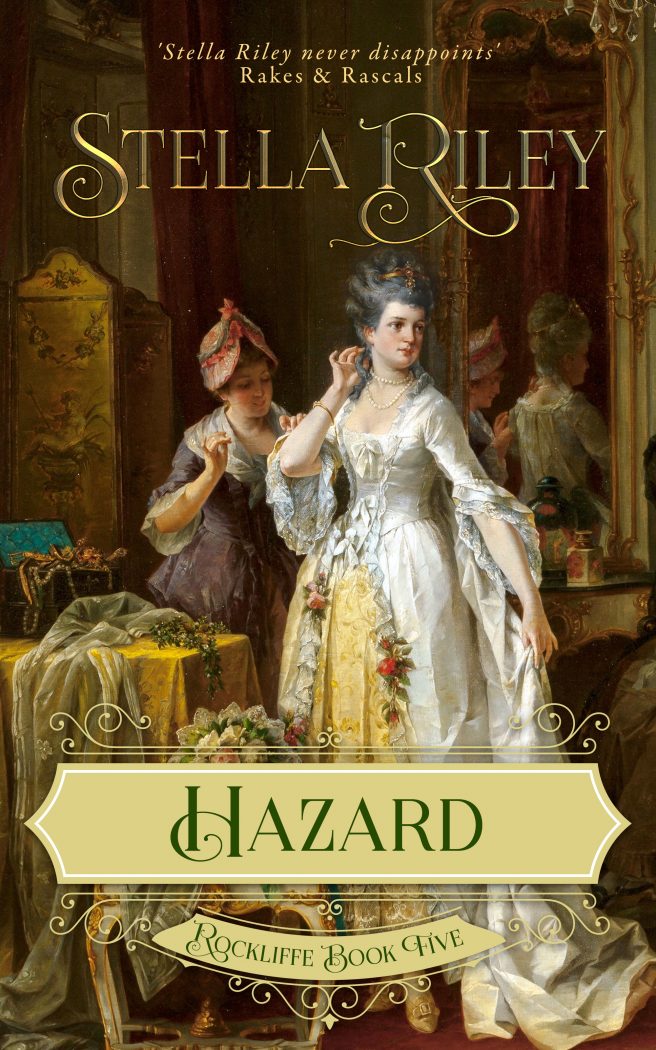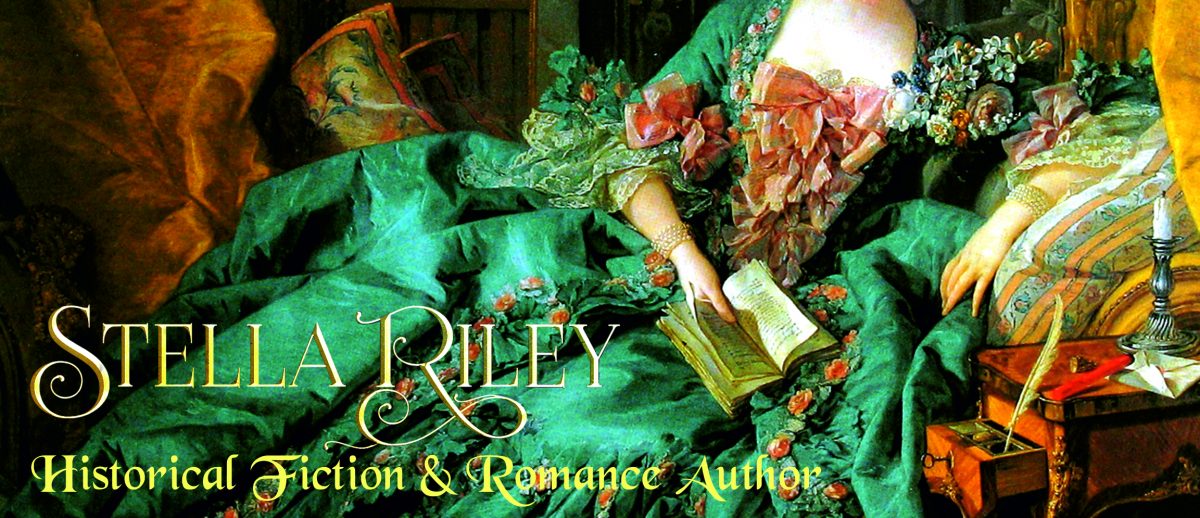Source: WENDY’S FAVOURITES – REVIEW OF THE WICKED COUSIN BY STELLA RILEY
Category: Books
Rockliffe Box Set
REVIEW: A SPLENDID DEFIANCE BY STELLA RILEY
Genre: Romantic Historical Fiction (English Civil War, 1644-1646) Cover Blurb: Justin Ambrose, dashing cavalier and close companion to Prince Rupert, was bored with life in the Royalist garrison in…
Welcome to Adrian’s world
In HAZARD, Lord and Lady Sarre’s house-party takes us once again to my own home turf. Here are a few pictures of the Ancient Cinque Port of Sandwich – most of which have changed very little since Adrian’s time.

Let’s start by wandering down to Sandwich Bay …
Marcus would put money, if he’d had any, on Sarre having procured a license; and, if that was the case, there was almost certainly only one place he’d go. The house in that God-forsaken spot on the east Kent coast that he’d always been so bloody fond of. (Extract from The Player)
Caroline opened the curtains and found herself gazing across a narrow sand and shingle beach to miles and miles of empty grey ocean. She shut her eyes and then opened them again. If one were searching for the bleakest most deserted spot one could find, this should surely qualify.
Adrian’s guided tour – and schoolroom lesson.
‘During the reign of Edward the Confessor, Sandwich and four similar ports were grouped together to become known as the Cinque Ports.’
‘The other four being …?’
‘Dover, Hastings, Hythe and Romney,’ said Sarre. Then, ‘Who is conducting this lesson?’
‘You, my lord,’ replied Caroline severely. ‘But you shouldn’t miss things out.’
Adrian would have recognised his town in this painting. It shows the bridge over the River Stour and the Barbican; and, dominating the sky-line, St Peter’s church.
A similar view today. Adrian would have known the drawbridge built in 1757, not the more modern swing bridge we have now. But he’d recognise pretty much everything else.
‘The bridge is only about twenty years old,’ he remarked. ‘I remember it being built. Before that, one had to cross the river by ferry.’ Then, pointing to an odd building comprising two conical parts connected by an arch spanning the road, ‘The Barbican, on the other hand, pre-dates it by over two centuries. Tolls are payable there for every carriage, cart and cow wishing to use the bridge.’
Caroline strolled along, admiring a row of black-and-white half-timbered houses. She said, ‘I’ve never been anywhere like this. It’s charming.’
‘I’m glad you think so. In the sixteenth century, these houses and others like them were probably occupied by Flemish Huguenots who came here to escape religious persecution.’ He gave her a half-smile. ‘Many of them, it may interest you to know, were weavers by trade.’
The Guildhall Courtyard where Adrian and Caroline met Mr Bailes.
Sarre took in the thin coat hanging loosely on a too-thin frame and the swollen joints in the rheumatic hands. Then, turning to Caroline, he said, ‘I’m being very rude. This gentleman is Mr Bailes. He was head-gardener at Sarre Park when I was young. Mr Bailes – this is Mistress Maitland. She is a friend of mine.’
‘Honoured, Miss.’ Bailes touched his shapeless hat and looked back at the Earl with a sigh. ‘I’m glad to have seen you, m’lord – but I’ll be on my way now. It’s not right keeping the young lady standing about in the cold.’
His lordship detained him with a hand on his arm.
‘It isn’t – which is why we’ll go over to the Old New Inn so that she can sit by the fire while you tell me everything.’
Inside the church of St Peter …
With no music, no flowers and an openly disapproving vicar, the ceremony was both simple and no longer than necessary. The ring slid on to her finger, warm from his hand. She stared at it for a second, transfixed, before looking into his face to discover that he was doing the same thing, his expression oddly intent. Then the silver-grey eyes flicked back to her face and the shadows vanished in a dazzling smile.
This has changed a bit. These days, St Peter’s is no longer a functioning church – but the curfew bell, telling locals they may let their pigs and geese into the streets is still rung there every evening at 8 pm
And finally, Walmer Castle – scene of the confrontation between Adrian and Marcus.
Marcus swallowed. ‘Come to gloat, have you?’
No, you malicious ass, answered Adrian silently. I’ve come to rub your nose in the mess you’ve made of your own life and done your damnedest to make of mine. And to find out why.
Originally built as one of Henry the Eighth’s coastal defences, the castle later became the home of the Lords Warden of the Cinque Ports. In Adrian’s day the current Lord Warden was the Earl of Holderness.
I hope you’ve enjoyed this brief tour around Adrian’s town. As you may possibly have guessed, I’m proud to live here.
WENDY’S FAVOURITES – AUDIOBOOK REVIEW: LES MÉSALLIANCE BY STELLA RILEY AND NARRATED BY ALEX WYNDHAM
(Rockliffe, #2) Genre: Historical Romance (Georgian – 1767 and 1775) Cover Blurb: The Duke of Rockliffe is 36 years old, head of his house, and responsible for his young sister, Nell. He is, theref…
Source: WENDY’S FAVOURITES – AUDIOBOOK REVIEW: LES MÉSALLIANCE BY STELLA RILEY AND NARRATED BY ALEX WYNDHAM
Audiobook Review- The Parfit Knight by Stella Riley
Audiobook Review- The Parfit Knight by Stella Riley
REVIEW – THE PARFIT KNIGHT BY STELLA RILEY
THE CHEAPSIDE HOARD … AND LUCIANO DEL SANTI

Some of you who follow me on this site have asked whether I’ve seen the Cheapside Hoard at the London Museum. In fact, I visited it some years ago and returned yesterday to see the extended exhibition – which is both amazing and fascinating.
The collection defies description, so I won’t try. I’ll merely say that I fell in love with some of the daintiest pendants I’ve ever seen; that the emerald salamander [photo below] is barely more than an inch long but beautifully-detailed; and that my personal favourite was the emerald parrot [see above] which is no larger than the nail on my little finger – but perfectly recognisable.
Thanks to a surge in publicity lately, I imagine most people at least know of the Hoard’s existence – but due to what I’ll call the ‘Luciano connection’, I thought it might be interesting to fill in some background information.
Basically, the Hoard is an unbelievably large collection of Elizabethan and Jacobean jewelry, coins and uncut gems. It was discovered in June, 1912 by workmen demolishing numbers 30-32 Cheapside, on the corner with Friday Street. The men found it buried in the earth floor of a cellar, caked in mud and virtually unrecognisable as what it actually was. Finds of various nature were not uncommon in London at that time and a gentleman known as Stony Jack Lawrence had for years been trying to teach workmen that even the merest fragment of metal or pottery could have archaeological significance.
Stony Jack was a number of things; collector, antiquarian and pawnbroker as well as library assistant for the Guildhall Museum. When he received the first installment of the Hoard – there were several of them – he realised that there was only one possible home for it. Within two days, he had been appointed Inspector of Excavations for the London Museum – but the incredible discovery was kept severely under wraps for a further two years. Not until March, 1914 did the Hoard go on display to the public in the Gold and Silver Room of the museum’s new home in Stafford House.
One naturally marvels at the sheer wealth of the collection and the many exquisitely-crafted pieces … but the inescapable questions arise. Who buried it in that cellar – and when – and why?
Well, there are plenty of possible theories and only one fairly conclusive fact.
The part of Cheapside where the Hoard was found was known as Goldsmiths’ Row and most, if not all, of the properties were owned and leased out by the Company of Goldsmiths. This, and the large number of uncut stones from places as far apart as Russia, South America and India along with certain unfinished pieces, suggest that the Hoard was stock of a working goldsmith.
As for the rest, if we can answer the ‘Why?’, we’ll probably also know the ‘When?’
As we are all aware, there were frequent outbreaks of Plague – most notably in 1625,1636 and 1665. But generally speaking, men of substance were able to flee the City for the duration and would almost certainly have taken their valuables with them.
The Great Fire of London might be a possibility – except that it took two days for the blaze to reach the west end of Cheapside. Shopkeepers there had plenty of time to remove their valuables and it’s hard to believe a goldsmith would choose to bury items of such value beneath premises that might well be burned down.
This leaves us with the Civil War. Did our goldsmith quit his trade to fight for one side or the other? Unlikely, I’d have thought – though if he went to war and never came back, it would account for him not retrieving his treasure. Or did he bury the Hoard because he was going away and was unable to either take it with him or entrust it to someone else?
This last, if you’ve read The Black Madonna, is obviously my favourite.
And finally to the ‘Luciano connection’. When I originally wrote The Black Madonna [back in 1991]I didn’t know of the Hoard’s existence until the book was more than half-written. Consequently, by the time I did learn of it, I had already set Luciano del Santi’s goldsmith’s shop on the corner of Friday Street and Cheapside – and thus, purely by accident, created a coincidence that was just too delicious to resist.
And since, to this day, nobody knows the real answers to the mystery of the Hoard and there is nothing amongst what we do know to contradict my fictional theory, I think it is probably as good a suggestion as any other.
The extended exhibition runs until April 27th and is well worth a visit. Magnifying glasses are supplied!














